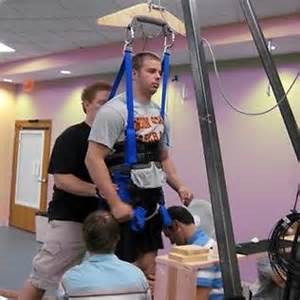New help for paralyzed patients is coming with some help from the Christopher and Diana Reeve Foundation
A number of years ago, a close friend of mine was in a car accident while driving back with his family in Florida. He was sleeping in the right passenger seat when his wife, the driver swerved to avoid hitting the object, flipping the Ford Explorer they were driving.
My friend was flown by helicopter to a trauma center in Florida and was diagnosed with a fracture to a vertebra in his neck. There were doubts about his future and immediate surgery was necessary to limit the damage. Two years later, he was able to walk and use his arms with noticeable neurological deficits and was considered lucky, when compared to others who were unable to experience his type of recovery.
This type of injury was life changing for both him and his family. We are still good friends and always hoped something or some technology could help people like my friend recover much of their lost function. Apparently, now, there may be a way to help people such as my friend with some help from the Christopher and Diana Reeve Foundation.
The technology stimulates the damaged or thought to be damaged nerves to reconnect. Studies with the new technology are promising and those damaged nerves may actually just be dormant or in some sort of coma, that this technology may be able to correct.
Read about it here
Paralyzed patients able to move legs again, thanks to Christopher Reeve’s legacy
By Kathleen O’Brien/The Star-Ledger
Using a medical device invented to treat back pain, researchers have discovered a way for paraplegics to move their legs.
The discovery represents a game-changing shift in the treatment of paralysis, said Peter Wilderotter, president of the Short Hills-basedChristopher & Dana Reeve Foundation, which helped fund the research.
“The old dogma used to be that whatever movement you got back in the first couple of months after your injury was all you could expect,” he said.
Now doctors have proved that some spinal nerves can be coaxed back to work even years after injury. Those nerves weren’t destroyed, it seems, but merely dormant, Wilderotter said.
“It’s truly a significant breakthrough,” he said.
The technique involves surgically implanting the small pliable strip with 16 tiny electrodes against the spinal cord just below the injury site. Very low electrical current is then used to stimulate the spinal cord — mimicking the way the brain sends commands.
“It’s giving the circuitry a little nudge, saying, ‘Remember? This is what you used to do’,” said Grace C.Y. Peng, program director of rehabilitation engineering at the National Institute of Biomedical Imaging and Bioengineering, which helped fund the experiment.
A battery pack is placed inside the abdominal cavity, which in turn is activated by a remote control held by the patient.
Read more
